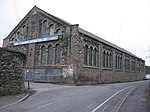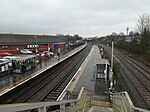Bristol Feeder Canal
Bristol HarboursideCanals in EnglandGeography of BristolUse British English from December 2016

The Bristol Feeder Canal is a body of water in Bristol, England, that connects the Floating Harbour with the River Avon.It stretches from Netham Lock where it connects with the tidal Avon in the east, to Totterdown Basin where it connects to the Floating Harbour and the original course of the Avon in the west.
Excerpt from the Wikipedia article Bristol Feeder Canal (License: CC BY-SA 3.0, Authors, Images).Bristol Feeder Canal
Feeder Road, Bristol St Philip's Marsh
Geographical coordinates (GPS) Address Nearby Places Show on map
Geographical coordinates (GPS)
| Latitude | Longitude |
|---|---|
| N 51.4512 ° | E -2.5642 ° |
Address
Feeder Road
Feeder Road
BS2 0UB Bristol, St Philip's Marsh
England, United Kingdom
Open on Google Maps









